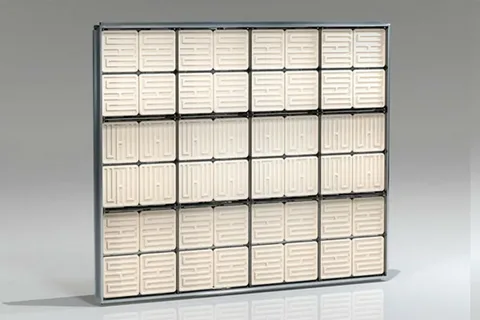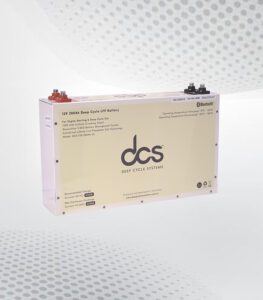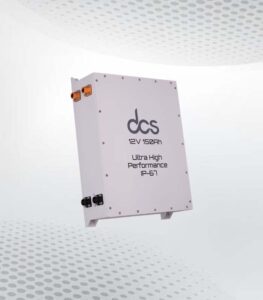Infrared thermal panels are increasingly popular for their energy-efficient heating solutions and sleek design, making them an excellent choice for modern homes. However, regular maintenance is crucial to ensure optimal performance and longevity. Here, we delve into 12 essential maintenance tips to keep your infrared radiant thermal panels in top condition. These tips include regularly cleaning the panels to remove dust and debris, checking for loose connections, ensuring the thermostat is calibrated accurately, and inspecting the electrical components for any signs of wear. Additionally, following the manufacturer’s guidelines and scheduling professional servicing when necessary to address any underlying issues effectively is important. By adhering to these maintenance practices, you can maximise the efficiency and lifespan of your Infrared Radiant Heating Panels.
Regular Cleaning
Dust and dirt can accumulate on your infrared thermal panels, diminishing their efficiency. Routinely wipe the surface with a soft, dry cloth to maintain their performance. For more stubborn grime, use a damp cloth with a mild detergent. Avoid abrasive cleaners as they can scratch the panel’s surface. Additionally, ensure the panels are turned off and cool before cleaning to prevent accidents. Regular cleaning not only enhances efficiency but also contributes to the longevity of your panels.
Checking for Damage
Inspect your infrared thermal panels regularly for any physical damage, such as cracks or chips. Damaged panels can affect performance and may pose safety risks. Examine the surface and edges carefully, and look for discolouration or warping. Pay special attention to any unusual noises or smells when the panels operate, as these could indicate underlying issues. If you notice any damage, consult a professional for assessment and repair. Avoid using the panels until properly inspected to prevent further complications.
Electrical Connections of Infrared Radiant Thermal Panels
Regularly inspect the electrical connections of your infrared radiant thermal panels to ensure they remain secure and intact. Loose or corroded connections can lead to inefficiency and potential hazards. Turn off the power supply before checking the connections to prevent electrical shock. Look for signs of wear or fraying in the wiring and replace any damaged components immediately.
Hiring a qualified electrician is advisable if you are uncomfortable working with electrical systems. Additionally, ensure that the power cords are not pinched or trapped, which can cause insulation damage and short circuits. Proper electrical connection maintenance is essential for safely and efficiently operating your infrared thermal panels.
Thermostat Calibration
Accurate thermostat calibration is essential for consistent temperature and energy efficiency. Begin by comparing the panel’s thermostat readings with an external thermometer. If discrepancies are found, recalibrate the thermostat according to the manufacturer’s guidelines. This process ensures the panels provide the desired warmth without unnecessary energy consumption.
Additionally, check for software updates that might enhance the thermostat’s accuracy. Regular calibration can help maintain optimal heating performance and prevent the panels from overworking. Consult the user manual or seek professional assistance if unsure about the calibration process.
Ventilation and IR Heating Panel
Proper ventilation is crucial for the optimal performance of your infrared thermal panels. Ensure that the room has adequate airflow to allow even heat distribution. Blocked or insufficient ventilation can lead to overheating and reduced efficiency. Additionally, avoid placing the panels too close to walls or furniture to prevent heat obstruction. Regularly check that vents and air passages are clear of dust and debris to maintain effective airflow.
If your panels are used in a space with poor ventilation, consider using fans or additional ventilation solutions to improve air circulation. Proper ventilation not only enhances heating efficiency but also contributes to the safety and longevity of your IR Heating Panel.
Software Updates and Infrared Heating Panels
Infrared thermal panels equipped with smart technology often rely on software to manage their performance and efficiency. Regular software updates ensure your panels operate with the latest features and improvements. Manufacturers periodically release updates to enhance functionality, improve energy efficiency, and address software bugs. Check for updates through the panel’s control interface or the manufacturer’s website. Download and install these updates following the instructions to avoid disruptions in operation.
Updating your software can also provide new features that enhance user experience, such as improved thermostat controls or advanced energy monitoring capabilities. Updates may also improve compatibility and interaction with other devices if your panels are integrated into a smart home system.
Additionally, software updates can enhance security measures, protecting your system from potential vulnerabilities. Always back up any settings or configurations before updating to ensure you can restore them if needed. Consult the user manual or contact customer support if you need help with the update process. Staying proactive with software maintenance helps maximise the efficiency and functionality of your Infrared Heating Panels.
Professional Servicing
Engaging a professional for the annual servicing of your infrared thermal panels ensures they remain in peak condition. Technicians can identify and address issues that may not be apparent during routine maintenance, such as internal component wear or calibration discrepancies. They can also provide a deep clean, particularly in areas that are hard to reach or clean effectively yourself. Additionally, professionals can perform thorough electrical inspections, ensuring all connections and components meet safety standards.
A technician can check for and install any necessary software updates if your panels have smart technology. Regular professional servicing can also include performance assessments to ensure your panels are operating efficiently, potentially saving you money on energy bills. Scheduling this service annually helps maintain your heating system’s overall health and safety, ensuring you get the most out of your investment. Always hire a qualified technician with experience in infrared thermal panel systems for the best results.
Importance of the User Manual for Heating Panels Infrared
Consulting the user manual for your infrared thermal panels is essential for understanding specific maintenance guidelines and operational instructions tailored to your model. This resource is invaluable for ensuring optimal performance and safety.
Detailed Maintenance and Troubleshooting Instructions
The user manual provides comprehensive steps for cleaning and maintaining your infrared thermal panels. Regular maintenance is crucial for prolonging the panels’ lifespan and efficiency. The manual also outlines troubleshooting procedures for common issues, helping you address problems quickly and effectively. Familiarising yourself with these guidelines can save time and reduce the risk of operational mishaps.
Safety Precautions and Hazards
Safety is a top priority when operating any heating system. The user manual includes important safety precautions designed to prevent potential hazards. Following these recommendations, you can ensure a safe environment while using your infrared thermal panels, protecting yourself and your home.
Customer Support and Professional Servicing
In addition to maintenance guidelines, the manual often includes contact information for customer support and authorised service centres. This can be invaluable if you need professional servicing or require replacement parts. Keeping this information handy can expedite the process of addressing any concerns or issues that arise.
Quick Reference for Routine Checks
Keeping the user manual accessible for quick reference is advisable, especially during routine checks or when unexpected issues occur. Regularly reviewing the manual ensures that you stay informed about the best practices recommended by the manufacturer. This diligence helps maintain the efficiency and safety of your Heating Panels Infrared, allowing you to enjoy their benefits for years to come.
Energy Consumption Monitoring
Utilise smart meters or energy monitoring apps to track the energy consumption of your infrared thermal panels. This data can help identify unusual spikes in usage, which may signal inefficiencies or malfunctions. Regular monitoring enables you to spot trends and make informed decisions about when to perform maintenance or adjustments.
Ensuring your panels operate efficiently not only helps to lower energy bills but also reduces your carbon footprint. If you notice a sudden increase in energy consumption, inspecting the panels and associated systems for any issues may be necessary. Regularly reviewing your energy data can also highlight the effectiveness of other maintenance tasks, such as thermostat calibration and ventilation improvements.
Warranty Check
Periodically reviewing your warranty ensures you are familiar with what is covered, which can be invaluable for repairs or replacements. Many warranties require specific maintenance practices to remain valid, so adhering to the manufacturer’s guidelines is crucial. Keep all receipts and records of maintenance work, as these might be needed to make a warranty claim. If you need to schedule professional servicing, ensure the manufacturer authorises the technician to avoid voiding the warranty.
Additionally, some warranties might have specific exclusions or conditions, such as using only approved cleaning products or avoiding DIY repairs. Being aware of these terms can prevent unexpected expenses and prolong the life of your infrared thermal panels. Always store the warranty documentation in a safe, accessible place for quick reference.
Placement Optimisation
Strategically positioning your infrared thermal panels is essential for efficient heat distribution. Avoid installing panels in draughty areas or where they might be obstructed by large furniture. Optimal placement usually involves mounting panels on walls or ceilings where they can radiate heat evenly across the room. Consider the room’s layout and the natural airflow when choosing the installation site.
Also, ensure that the panels are not placed too close to other heat sources, which can cause uneven heating and reduced efficiency. For larger spaces, multiple panels may be required to achieve uniform warmth. Properly positioning your panels will maximise performance and create a comfortable, well-heated environment.
Safety Precautions and use of Electric Heating Panels Systems
When using Electric Heating Panels Systems, it is essential to adhere to safety guidelines to prevent accidents and ensure efficient operation. First, ensure a qualified technician installs the panels to avoid electrical hazards. Avoid placing flammable materials near the panels to reduce the risk of fire. Never cover the panels with cloth or any other material, as this can cause overheating.
Regularly inspect the panels for signs of wear or damage and promptly address any issues to maintain safety. Ensure children and pets are supervised around the panels to prevent accidental burns. Finally, follow the manufacturer’s safety instructions regarding the use and maintenance of the panels to avoid voiding the warranty and ensure long-term, safe operation.
Conclusion
Maintaining your Infrared Radiant Heating Panels is essential for maximising their performance, longevity, and safety. Following these 12 maintenance tips—such as regular cleaning, damage inspections, and proper ventilation—you can ensure that your heating system operates efficiently and effectively. Engaging professionals to service and keep up with software updates also plays a crucial role in maintaining optimal function. With proper care, your infrared panels will continue to provide warmth and comfort while contributing to energy savings and a sustainable home environment.
FAQs
1. How often should I clean my Heating Panels Infrared?
You should clean your Heating Panels Infrared at least once a month. Regular cleaning helps maintain efficiency and prevents dirt buildup, which can affect performance. If you notice heavy dust or stains, you may need to clean them more frequently.
2. What should I do if I notice physical damage to my panels?
If you find cracks, chips, or any discolouration on your infrared thermal panels, it’s important to stop using them immediately. Contact a professional for an assessment and necessary repairs to avoid safety hazards and ensure optimal performance.
3. How can I ensure my thermostat is accurately calibrated?
To calibrate your thermostat, compare its readings with an external thermometer. If there are discrepancies, follow the manufacturer’s instructions for recalibration. Regular checks help maintain consistent heating and energy efficiency.
4. Why is proper ventilation important for infrared heating panels?
Proper ventilation ensures even heat distribution and prevents overheating. Blocked vents can reduce efficiency and lead to safety issues. Ensure the area around the Infrared Heating Panels is clear of obstructions for optimal airflow.
5. How often should I schedule professional servicing for my infrared panels?
Having your infrared thermal panels professionally serviced at least once a year is advisable. This ensures that all components function properly, electrical connections are secure, and any hidden issues are addressed before they become serious problems.
| Related Business Listings |
| Contact Directory |
| Local Business Profiles |




